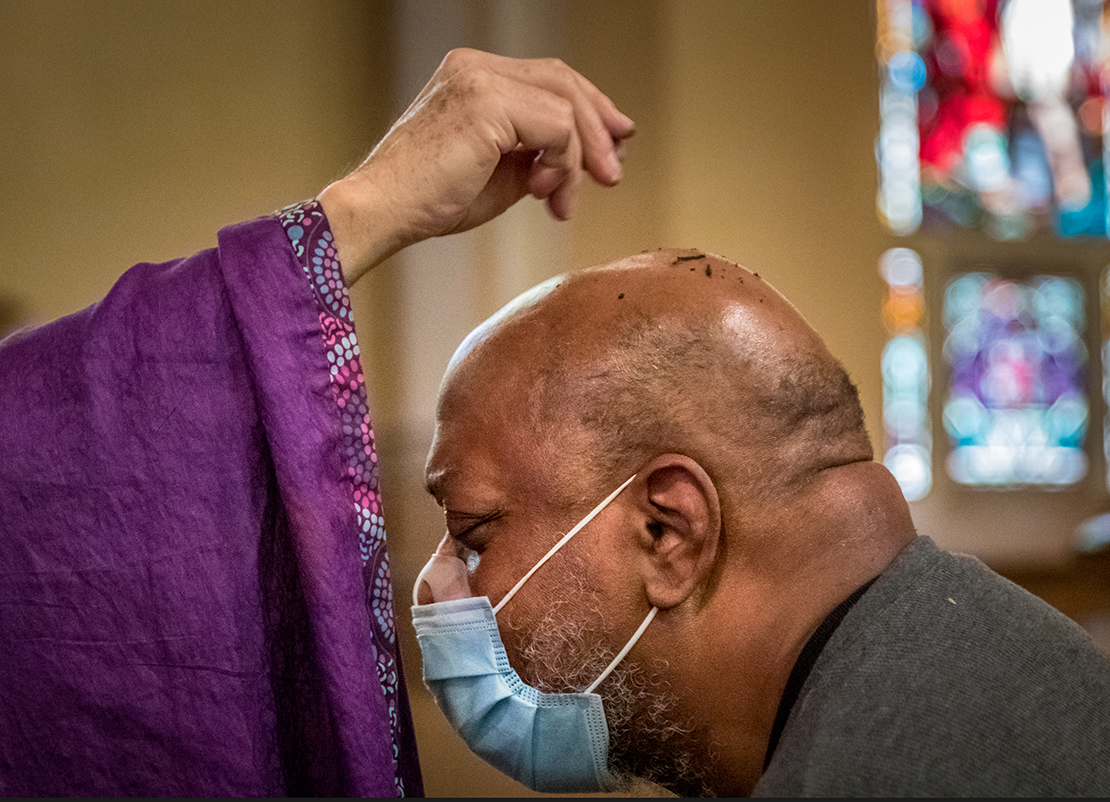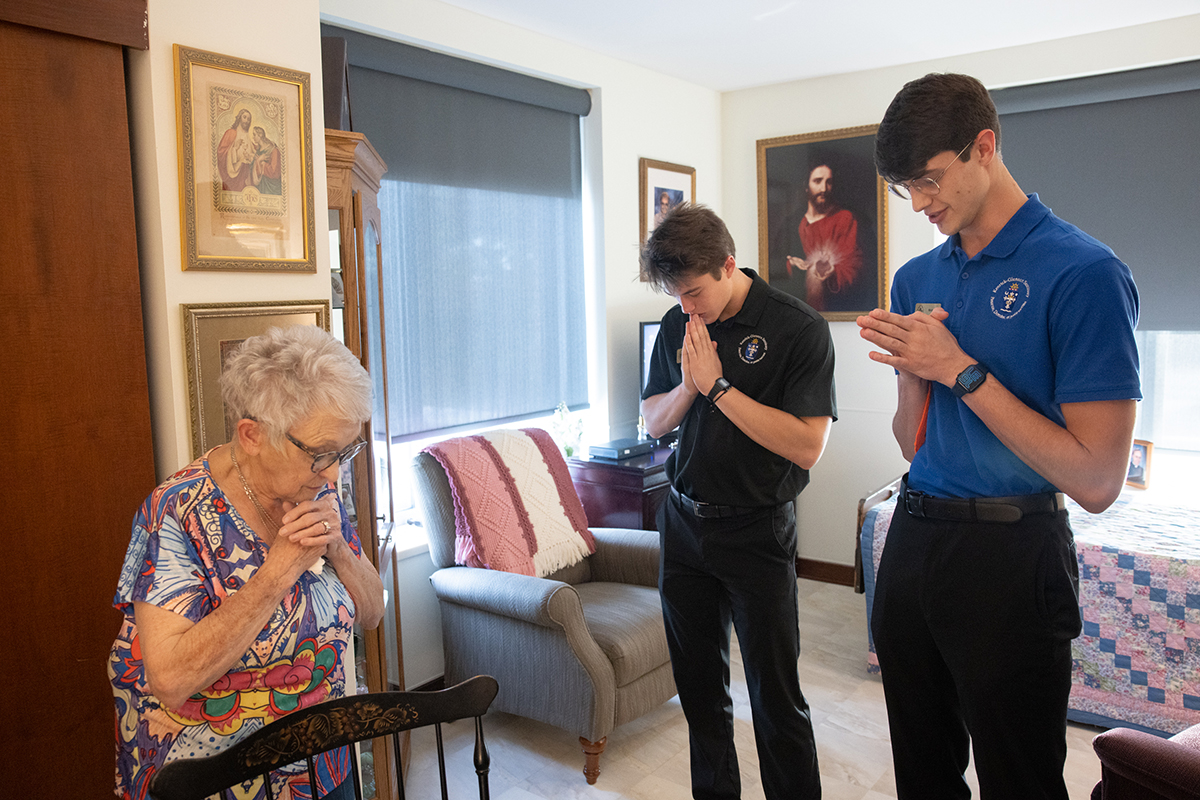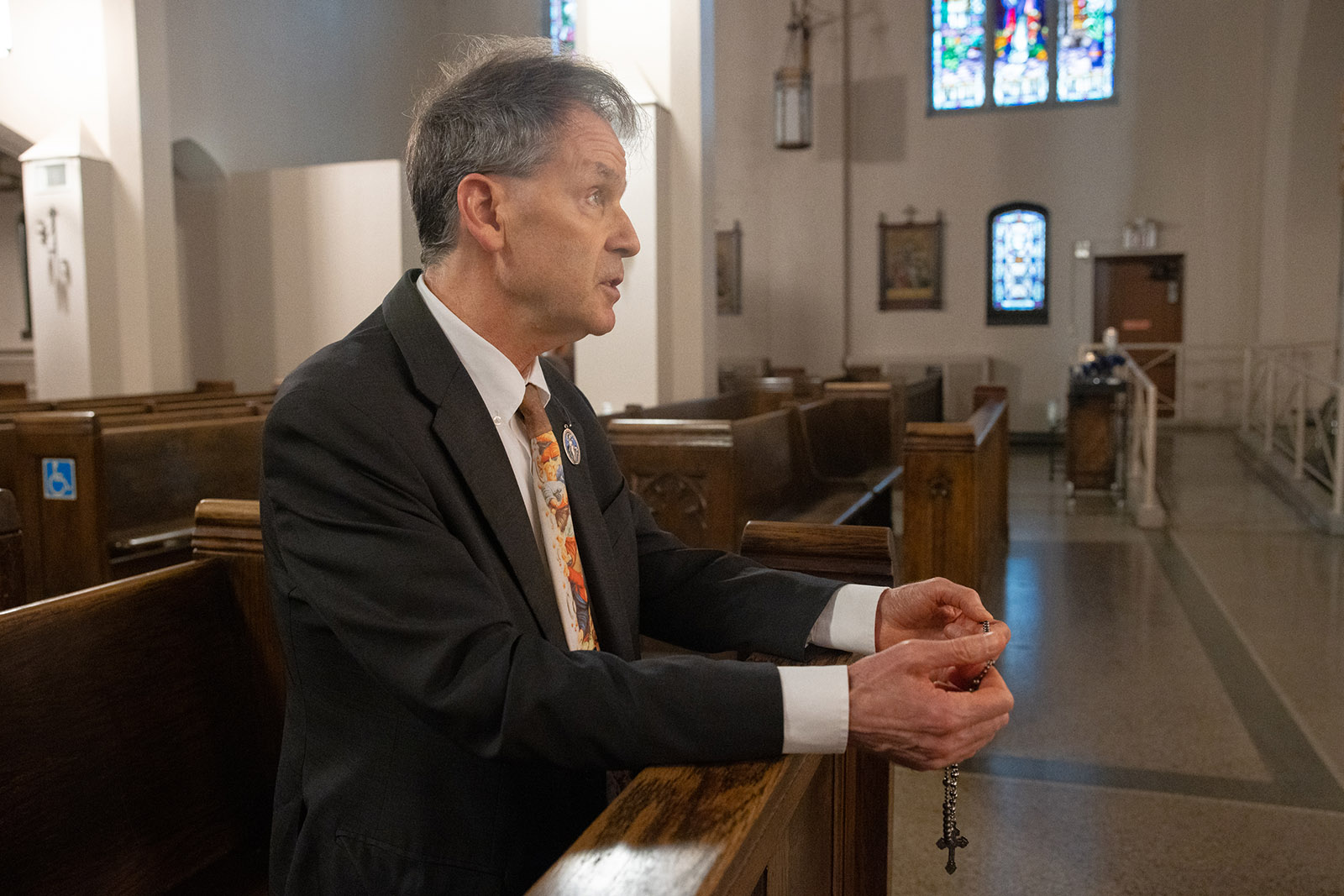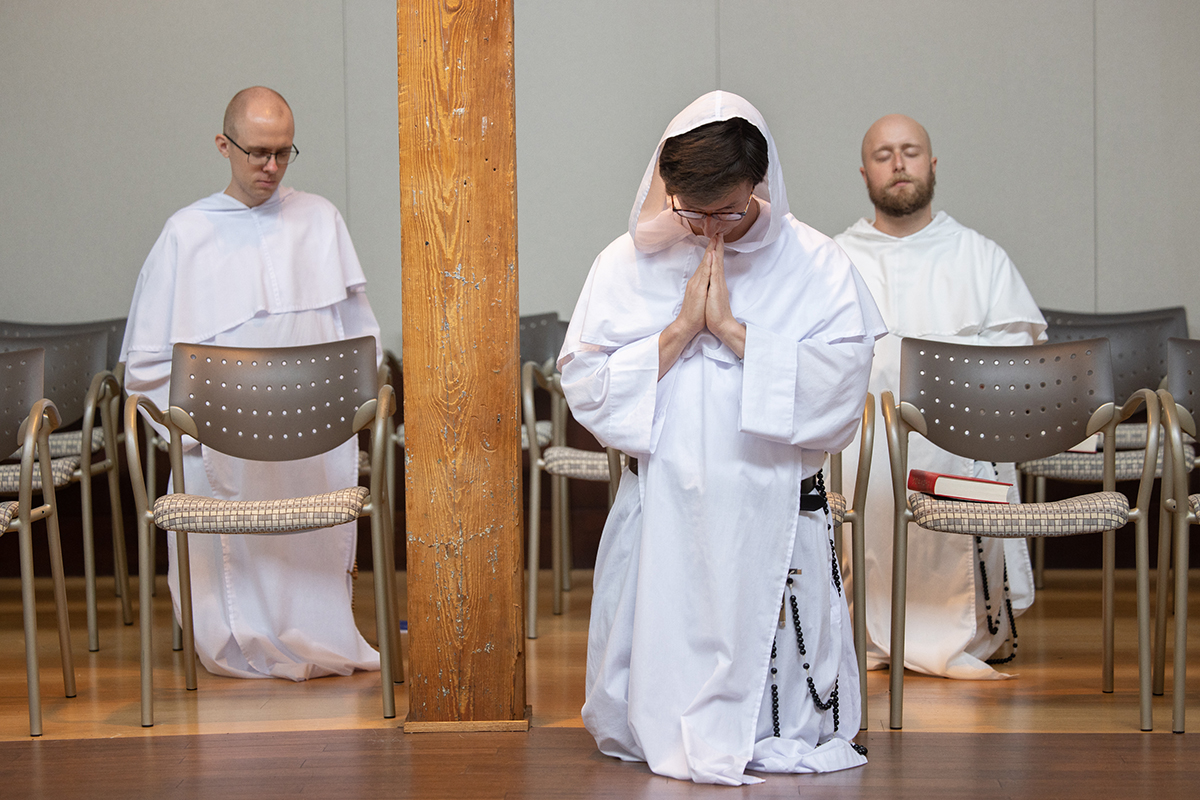Ash distribution could be different

Vatican recommends modification of Ash Wednesday tradition
Ash Wednesday (Feb. 17) is the beginning of Lent, a period of 40 days in which we stop and reflect on our relationship with God. Lent also helps us identify where we may grow spiritually.
The distribution of ashes on Ash Wednesday is rooted in Scripture and tradition. In the Old Testament, people used ashes as a sign of repentance, meaning to turn away from sin and to turn toward God. They would sprinkle them on their heads, mingle them with food and drink and sit in them.
Ashes are an outward expression of our need to repent and begin anew. They’re also a sign of physical death, meaning that we began as dust, and our bodies will return to dust until we are raised up by Christ. Ashes typically are imposed with the words, “Remember you are dust and to dust you shall return,” while the sign of the cross is marked on the forehead.
This, year, however, the Vatican made the recommendation of a modified method for distributing ashes: sprinkling them on the top of people’s heads rather than using them to make a cross on people’s foreheads. The note on the “distribution of ashes in time of pandemic” was published online in January by the Vatican Congregation for Divine Worship and the Sacraments.
It said priests should bless the ashes with holy water at the altar and then address the entire congregation with the words in the Roman Missal that are used when marking individual’s foreheads with ashes: Either “Repent and believe in the Gospel” or “Remember that you are dust and to dust you shall return.” The sprinkling of ashes on individual heads would take place without any words said to each person.
Archbishop Mitchell Rozanski in February sent a memo to priests, deacons and liturgical coordinators of the archdiocese, stating that it is the pastor’s discretion whether to impose ashes via sprinkling or the traditional placing them on the forehead. “If ashes are to be placed on the forehead, you will do so without saying the formula to those who come forward,” the archbishop wrote. Parishes also have the option of not distributing ashes.
By receiving ashes, we publicly proclaim our intent to die to our worldly desires and live even more in Christ’s image, which we focus on during the season of rebirth in Lent. Ashes are from the burned and blessed palms distributed the previous year on Palm Sunday.
In early human religious practice, clay was smeared on the body of the deceased as a symbol of respect. This custom seemed to have emerged to the mourners to put some of the dust of the grave on them as a symbol of mourning and unity with the deceased. As religion continued to develop, the use of ashes evolved to not just be a symbol of sorrow and mortality, but also one of repentance.
These themes run through the biblical use of ashes. In the Book of Esther, Mordecai put on sackcloth and ashes in sorrow at the plan to kill all of the Jewish people in the Persian Empire (Esther 4:1). Job, facing the many unfortunate situations he found himself in, repented of his sins in ashes (Job 42:6). Famously, Jonah traveled but a day in the great city of Ninevah before the king directed the whole town to repent in sackcloth and ashes in hopes that the Lord would not destroy the town (Jonah 3:5-6).
Jesus also saw ashes a symbol of repentance, of turning away from sin to embrace the life of the Gospel. In frustration for the hardness of heart with which many met Him, Jesus stated that Tyre and Sidion would have repented in sackcloth and ashes at the works and words He was giving to the people (Matthew 11:2).
In the early Church, when the practice of public penance was commonplace, priests would often sprinkle ashes on those who had come to the sacrament of reconciliation. By the eighth century, this practice would extend to the dying. A dying person would be laid on sackcloth and sprinkled with ashes and asked if they would accept these symbols of penance before their judgment.
Ashes symbolize our sorrow for our sins and express our desire to change. They also remind us of our mortality, that we are but dust and one day we will return to that same dust from which we came.
Archdiocesan Lenten regulations
“For God so loved the world that He gave His only Son, so that everyone who believes in Him might not perish but might have eternal life. For God did not send His Son into the world to condemn the world, but that the world might be saved through Him” (John 3:16-17).
The Church has always helped us fulfill these words of Jesus by prescribing very definite penance for all Catholics, so that we too might have eternal life. Accordingly, the pope and the American bishops have outlined obligatory fast and abstinence as follows:
Ash Wednesday (Feb. 17), all Fridays of Lent and Good Friday (April 2) are days of abstinence (refraining from meat) for all Catholics from age 14 onward. On Good Friday and Ash Wednesday, fast, as well as abstinence, is also obligatory for those from the ages of 18-59. Abstinence means refraining from meat. Fast means one full meal a day, with two smaller meals and nothing between meals (liquids are permitted). No Catholic will lightly excuse himself or herself from this obligation.
This year, the solemnity of St. Joseph falls on a Friday during Lent. Therefore, per the guidelines of Canon Law, one is not obliged to abstain from meat on Friday, March 19.
We should strive to make all days of Lent a time of prayer and penance.
Some information for this story was provided by Catholic News Service and a previous Dear Father column from Father John Mayo.
>> Lenten resource
Keep an eye out at archstl.org/lent-2021 for ways in which you can make a good Lent.
Ash Wednesday (Feb. 17) is the beginning of Lent, a period of 40 days in which we stop and reflect on our relationship with God. Lent also helps us identify … Ash distribution could be different
Subscribe to Read All St. Louis Review Stories
All readers receive 5 stories to read free per month. After that, readers will need to be logged in.
If you are currently receive the St. Louis Review at your home or office, please send your name and address (and subscriber id if you know it) to subscriptions@stlouisreview.com to get your login information.
If you are not currently a subscriber to the St. Louis Review, please contact subscriptions@stlouisreview.com for information on how to subscribe.







